
Courtney Nimura
I am currently the Curator for Later European Prehistory at the Ashmolean Museum of Art and Archaeology, a Research Fellow at Wolfson College, a Research Associate at the Institute of Archaeology, University of Oxford, and a Research Fellow at the University of Exeter. My research focuses on rock art and portable art in Europe; Bronze Age and Iron Age archaeology in Northern, Central, and Western Europe; coastal and intertidal archaeology; effects of environmental change on art production; and the intersections of archaeological and anthropological theory in prehistoric art studies. With previous degrees in archaeology, museum studies, fine art, and art history, I am also interested in how contemporary art can interact with archaeology.
I am currently leading and collaborating on four grant-funded projects: NoMAD: Non-destructive Mobile and imaging Device at the University of Exeter (funded by UKRI); LINXS: Heritage Science theme at the University of Lund (https://www.linxs.se/heritage-science); Sir John Evans and the Hallstatt Collection at the Ashmolean Museum (https://ashmolean.org/the-hallstatt-collection-sir-john-evans); and the Iron Age Coins in Britain Linked Open Data project at the Ashmolean and School of Archaeology (https://ccid.web.ox.ac.uk; https://iacb.arch.ox.ac.uk/).
Recent grant-funded projects include Ebb & Flow: Exploring rivers in later prehistoric Britain (https://ebbandflow.web.ox.ac.uk) and BALMS: Bronze Age Landscapes and Metalwork in Sweden (https://www.arch.ox.ac.uk/balms).
From 2017–2018, I was a Research Fellow at the Place, Evolution and Rock Art Heritage Unit at Griffith University (Australia) on the Australian Research Council Laureate project: Australian Rock Art History, Conservation and Indigenous Wellbeing. From 2015–2017, I was a researcher on the Leverhulme-funded project 'European Celtic Art in Context' at the Institute of Archaeology, Oxford (http://ecaic.arch.ox.ac.uk/) and a Junior Research Fellow at Wolfson College, Oxford.
I have a PhD in Archaeology from the University of Reading, for which I created a Scandinavian-wide GIS survey of prehistoric rock art and used this to discuss maritime rock art and human responses to environmental change. The monograph of this research was published in 2015 (http://www.oxbowbooks.com/oxbow/prehistoric-rock-art-in-scandinavia.html). I have an MA Distinction in Maritime Archaeology from the Institute of Archaeology, University College London. Prior to my settlement in the UK, I worked at the Museum of Fine Arts, Boston (USA) in Conservation and Collections Management. I completed my BFA (University of California, Santa Cruz) and MFA (Tufts University, SMFA) in fine art, art history and museum studies.
Address: Ashmolean Museum of Art and Archaeology
Beaumont Street
Oxford, OX1 2PH, UK
I am currently leading and collaborating on four grant-funded projects: NoMAD: Non-destructive Mobile and imaging Device at the University of Exeter (funded by UKRI); LINXS: Heritage Science theme at the University of Lund (https://www.linxs.se/heritage-science); Sir John Evans and the Hallstatt Collection at the Ashmolean Museum (https://ashmolean.org/the-hallstatt-collection-sir-john-evans); and the Iron Age Coins in Britain Linked Open Data project at the Ashmolean and School of Archaeology (https://ccid.web.ox.ac.uk; https://iacb.arch.ox.ac.uk/).
Recent grant-funded projects include Ebb & Flow: Exploring rivers in later prehistoric Britain (https://ebbandflow.web.ox.ac.uk) and BALMS: Bronze Age Landscapes and Metalwork in Sweden (https://www.arch.ox.ac.uk/balms).
From 2017–2018, I was a Research Fellow at the Place, Evolution and Rock Art Heritage Unit at Griffith University (Australia) on the Australian Research Council Laureate project: Australian Rock Art History, Conservation and Indigenous Wellbeing. From 2015–2017, I was a researcher on the Leverhulme-funded project 'European Celtic Art in Context' at the Institute of Archaeology, Oxford (http://ecaic.arch.ox.ac.uk/) and a Junior Research Fellow at Wolfson College, Oxford.
I have a PhD in Archaeology from the University of Reading, for which I created a Scandinavian-wide GIS survey of prehistoric rock art and used this to discuss maritime rock art and human responses to environmental change. The monograph of this research was published in 2015 (http://www.oxbowbooks.com/oxbow/prehistoric-rock-art-in-scandinavia.html). I have an MA Distinction in Maritime Archaeology from the Institute of Archaeology, University College London. Prior to my settlement in the UK, I worked at the Museum of Fine Arts, Boston (USA) in Conservation and Collections Management. I completed my BFA (University of California, Santa Cruz) and MFA (Tufts University, SMFA) in fine art, art history and museum studies.
Address: Ashmolean Museum of Art and Archaeology
Beaumont Street
Oxford, OX1 2PH, UK
less
Related Authors
Richard Woodfield
University of Birmingham
Carlos Fabião
Universidade de Lisboa
Marta Diaz-Guardamino
Durham University
Enrico Cirelli
Università di Bologna
Kristian Kristiansen
University of Gothenburg
Laurajane Smith
The Australian National University
Gary Feinman
Field Museum
Victor Thompson
The University of Georgia
Olga Palagia
National & Kapodistrian University of Athens
Iain McKechnie
University of Victoria
InterestsView All (12)
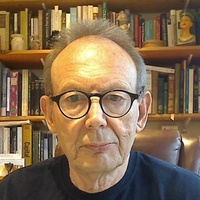

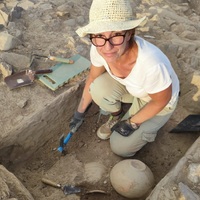
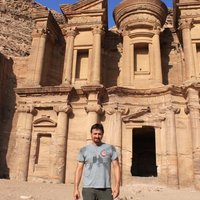
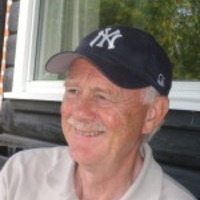
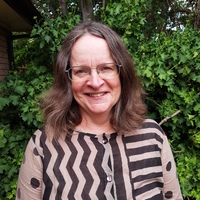
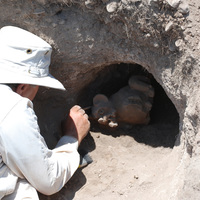
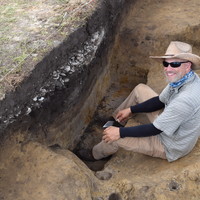
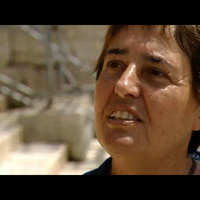
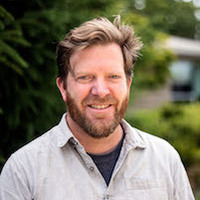
Uploads
Books by Courtney Nimura
This volume showcases examples of such work, highlighting the utility of these ideas for exploring material both old and new. The illuminating research and novel explanations presented contribute to resolving long-standing problems in regional archaeologies across Africa, Asia, Australia, Europe, and Oceania. In this way, this volume reinvigorates approaches taken towards older material while also acting as a springboard for future innovative discussions of theory in archaeology and related disciplines.
ISBN: 9781789253948
Researchers and heritage managers around the world are witnessing severe challenges and developing innovative mechanisms for dealing with them. Increasingly archaeologists are embracing practices learned from the natural heritage sector, which has long worked with the public in practical recording projects. By involving the public in projects and making data accessible, archaeologists are engaging society in the debate on threatened heritage and in wider discussions on climate change. Community involvement also underpins wider climate change adaptation strategies, and citizen science projects can help to influence and inform policy makers. Developing threats to heritage are being experienced around the world, and as this collection of papers will show, new partnerships and collaborations are crossing national boundaries.
With examples from across the globe, this book brings together a selection of papers that detail the scale of the problem through a variety of case studies. Together they will demonstrate how heritage professionals, working in diverse environments and with distinctive archaeology, are engaging with the public to raise awareness of this threatened resource. The contributions in this volume will examine differing responses and proactive methodologies for the protection, preservation and recording of sites at risk from natural forces. It will demonstrate how new approaches can better engage people with the growing number of sites that are under increasing threat of destruction, thus contributing to the resilience of our shared heritage. The new insights using real-life examples presented in this volume will make it a key reference in the field of climate change and heritage studies.
Papers by Courtney Nimura
ISBN: 9781789253948
ISBN: 9781789253948
ISBN: 9781789252019
Researchers and heritage managers around the world are witnessing severe challenges and developing innovative mechanisms for dealing with them. Increasingly archaeologists are embracing practices learned from the natural heritage sector, which has long worked with the public in practical recording projects. By involving the public in projects and making data accessible, archaeologists are engaging society in the debate on threatened heritage and in wider discussions on climate change. Community involvement also underpins wider climate change adaptation strategies, and citizen science projects can help to influence and inform policy makers. Developing threats to heritage are being experienced around the world, and as this collection of papers will show, new partnerships and collaborations are crossing national boundaries.
With examples from across the globe, this book brings together a selection of papers that detail the scale of the problem through a variety of case studies. Together they will demonstrate how heritage professionals, working in diverse environments and with distinctive archaeology, are engaging with the public to raise awareness of this threatened resource. The contributions in this volume will examine differing responses and proactive methodologies for the protection, preservation and recording of sites at risk from natural forces. It will demonstrate how new approaches can better engage people with the growing number of sites that are under increasing threat of destruction, thus contributing to the resilience of our shared heritage. The new insights using real-life examples presented in this volume will make it a key reference in the field of climate change and heritage studies.
ISBN: 9781785707049
Both projects employ a system of community-based training and outreach programmes, creating an infrastructure to support a network of volunteers with the skills and systems in place to enable them to monitor and survey the highly significant but threatened archaeological sites around England’s coast and foreshores. This paper looks at the evolution of the methodologies employed by these projects, both archaeological and educational, as well as the implementation of standardised recording and monitoring using crowd-sourced data, and presents key findings from this ‘citizen science’ programme. Coastal erosion can rarely be halted, but the hope of TDP and CITiZAN is to involve the public in such a way that will help ensure archaeological sites can be recorded before they are destroyed.
ISBN: 9781785707049
This volume showcases examples of such work, highlighting the utility of these ideas for exploring material both old and new. The illuminating research and novel explanations presented contribute to resolving long-standing problems in regional archaeologies across Africa, Asia, Australia, Europe, and Oceania. In this way, this volume reinvigorates approaches taken towards older material while also acting as a springboard for future innovative discussions of theory in archaeology and related disciplines.
ISBN: 9781789253948
Researchers and heritage managers around the world are witnessing severe challenges and developing innovative mechanisms for dealing with them. Increasingly archaeologists are embracing practices learned from the natural heritage sector, which has long worked with the public in practical recording projects. By involving the public in projects and making data accessible, archaeologists are engaging society in the debate on threatened heritage and in wider discussions on climate change. Community involvement also underpins wider climate change adaptation strategies, and citizen science projects can help to influence and inform policy makers. Developing threats to heritage are being experienced around the world, and as this collection of papers will show, new partnerships and collaborations are crossing national boundaries.
With examples from across the globe, this book brings together a selection of papers that detail the scale of the problem through a variety of case studies. Together they will demonstrate how heritage professionals, working in diverse environments and with distinctive archaeology, are engaging with the public to raise awareness of this threatened resource. The contributions in this volume will examine differing responses and proactive methodologies for the protection, preservation and recording of sites at risk from natural forces. It will demonstrate how new approaches can better engage people with the growing number of sites that are under increasing threat of destruction, thus contributing to the resilience of our shared heritage. The new insights using real-life examples presented in this volume will make it a key reference in the field of climate change and heritage studies.
ISBN: 9781789253948
ISBN: 9781789253948
ISBN: 9781789252019
Researchers and heritage managers around the world are witnessing severe challenges and developing innovative mechanisms for dealing with them. Increasingly archaeologists are embracing practices learned from the natural heritage sector, which has long worked with the public in practical recording projects. By involving the public in projects and making data accessible, archaeologists are engaging society in the debate on threatened heritage and in wider discussions on climate change. Community involvement also underpins wider climate change adaptation strategies, and citizen science projects can help to influence and inform policy makers. Developing threats to heritage are being experienced around the world, and as this collection of papers will show, new partnerships and collaborations are crossing national boundaries.
With examples from across the globe, this book brings together a selection of papers that detail the scale of the problem through a variety of case studies. Together they will demonstrate how heritage professionals, working in diverse environments and with distinctive archaeology, are engaging with the public to raise awareness of this threatened resource. The contributions in this volume will examine differing responses and proactive methodologies for the protection, preservation and recording of sites at risk from natural forces. It will demonstrate how new approaches can better engage people with the growing number of sites that are under increasing threat of destruction, thus contributing to the resilience of our shared heritage. The new insights using real-life examples presented in this volume will make it a key reference in the field of climate change and heritage studies.
ISBN: 9781785707049
Both projects employ a system of community-based training and outreach programmes, creating an infrastructure to support a network of volunteers with the skills and systems in place to enable them to monitor and survey the highly significant but threatened archaeological sites around England’s coast and foreshores. This paper looks at the evolution of the methodologies employed by these projects, both archaeological and educational, as well as the implementation of standardised recording and monitoring using crowd-sourced data, and presents key findings from this ‘citizen science’ programme. Coastal erosion can rarely be halted, but the hope of TDP and CITiZAN is to involve the public in such a way that will help ensure archaeological sites can be recorded before they are destroyed.
ISBN: 9781785707049
cosmology based on the movements of the sun. A second tradition develops out of the ethnography of the circumpolar region and combines archaeological evidence with the beliefs of hunter-gatherers. It postulates the existence of a three-tier cosmology in which people could communicate between
different worlds. This paper argues that certain elements that are thought to epitomize the ‘Southern’ system might have been suggested by existing ideas within Scandinavia itself. Both sets of beliefs came to influence one another, but they became increasingly distinct towards the end of the Bronze
Age. This paper reconsiders the rock carvings, metalwork and mortuary cairns of that period and the Iron Age in relation to the process of religious change.
ISBN: 9781407310909
We welcome case studies that investigate any number of topics, including rivers as borders that divide regions; routeways that connect people and promote human and object mobility; and places to conduct specific types of cultural activity. Rivers are particularly diagnostic of and sensitive to physical and anthropogenic forces, so they are ideal archaeological records and can be studied using a variety of methods. We therefore welcome case studies that highlight different proxies that can be used to evaluate human-river interaction and the scientific/archaeological/geological analysis techniques we can employ to inform our understandings. Central to this session is the goal to explore the theory of interpreting the archaeology we find in, on, and around rivers; to move past interpreting human and river interaction as a set of cause-and-effect behaviours and instead consider it as a complex and entangled relationship.
We welcome case studies that investigate any number of topics, including rivers as borders that divide regions; routeways that connect people and promote human and object mobility; and places to conduct specific types of cultural activity. Rivers are particularly diagnostic of and sensitive to physical and anthropogenic forces, so they are ideal archaeological records and can be studied using a variety of methods. We therefore welcome case studies that highlight different proxies that can be used to evaluate human-river interaction and the scientific/archaeological/geological analysis techniques we can employ to inform our understandings. Central to this session is the goal to explore the theory of interpreting the archaeology we find in, on, and around rivers; to move past interpreting human and river interaction as a set of cause-and-effect behaviours and instead consider it as a complex and entangled relationship.
Call for papers ends on Thursday 13 February 2020.
https://submissions.e-a-a.org/eaa2020/
discussion about post-factualism, they can make the production of knowledge more
transparent. But while corpora of ancient texts (‘text-editions’) have established a
science of their own, to date there have been few studies of the epistemological basis
and practices of knowledge production for corpora of ancient objects (‘thing-editions’).
Such studies are all the more important given that we are currently faced with the
challenge of how archaeological remains can be (re)presented digitally in their
materiality and rich diversity.
During the course of digitisation, it is important to revisit questions that already arose in the 19th century. On the other hand, the EAC’s Amersfoort Agenda (Schut et al. 2015) sets out some very useful pointers for addressing the challenges of the 3rd science revolution and highlights the need for some serious reconsideration, or “re-engineering”, of archaeological processes that were established in a different era when many of the tools we now have for data recording; analysis; research synthesis; and publication, were simply not available.
With such considerations in mind, our session aims to direct attention towards both the history of knowledge and the digital future of ‘thing-editions’. A particular focus will be placed on the role of digital corpora as an important tool for the preservation of cultural heritage internationally. Inasmuch as publishing research data make a substantial contribution towards the democratisation of knowledge and information, a discussion of the ethics and governance of digitisation is vital. This session will also consider ways of encouraging and supporting better sharing and re-use of heritage data, including:
- cooperative and multidisciplinary research tools.
- open access data and publication.
- wider use of open source software.
- Communities of Practice for IT users.
- FAIR digital data standards.
We want to motivate researchers to present innovative ideas on the topic that go beyond identifying single individuals as non-local (on the basis of material culture or scientific analysis) and aim for a more comprehensive understanding by zooming in and out of the evidence and by integrating all possible kinds of sources. We also appreciate papers which focus on more theoretical aspects, and papers which try to integrate archaeologies of the senses or anthropological approaches to human mobility in the past.
To submit a proposal for either a paper or poster, please send a c. 150-200 word abstract by 31st January 2019 with your name and affiliation to: migrationmetalages@gmail.com
Notre volonté est de motiver les chercheurs à présenter leur idées novatrices allant au-delà de la simple identification d'individus comme étant locaux ou non-locaux (sur la base de matériels culturels ou d'analyses scientifiques) et d'avoir une meilleure compréhension des mouvements de populations en prenant le recul nécessaire sur les preuves accumulées et en intégrant diverses sources de données. Des communications se concentrant davantage sur les aspects théoriques seraient également appréciées, tout comme des articles ayant pour objectif d'intégrer l'archéologie des sens ou d'incorporer des approches anthropologiques sur les mouvements des populations du passé.
Pour soumettre une proposition de communication orale ou par poster, merci d'envoyer un résumé de 150-200 mots accompagné de vos coordonnées et de votre affiliation avant le 31 Janvier 2019 à l'adresse mail suivante: migrationmetalages@gmail.com
We welcome papers that take a broad theoretical approach to the concept of magic in prehistory, those that develop case studies, or papers with some combination of theoretical and empirical work.
While many aspects of the archaeological record can be interpreted as referencing the watery realm through association (e.g. shell middens) or visual cues (e.g. rock art), our goal with this session is not to focus on simply identifying these connections, but to interrogate the nature of these relationships – to consider how water acts as a relational presence, and one that is informed by epistemologies and ontologies. For example, writing in the context of maritime/Saltwater people in Australia, McNiven (2008, 149) identifies a 'relational nexus between people, spirits, and the sea' – a particularly useful observation that draws attention to, and orients our thinking about the various elements that can be used to explore the water/people relationship. In this session, we wish to address the complex relational aspects between people, things, and water as a way of better understanding, among other things, the social and cultural networks in which people and things are embedded, and the myriad ways people construct, maintain and express their identity.
The papers in this session draw not only on archaeological data but also ethnographic and historical resources to address questions about relational waterscapes. Where has research into the nexus between the sea and the watery realm, more broadly, and the relational taken us? And how do we/can we address the relational through the lens of the watery realm?
Session: Rock Art, Embodiment, and Identity
Organised by: Jamie Hampson, Liam Brady & Courtney Nimura
Paper title: Ships and feet in Scandinavian prehistoric rock art
This session aims to bring together papers focusing on art from later prehistory. It will include both portable and parietal art created on or in a variety of materials. This session will specifically focus on the importance of archaeological context and examine how these can better inform our understandings of the significance of prehistoric art and its functions in society. It will ask what prehistoric art is, what it means, what it does and how it is enfolded into complex social relationships in both the past and present. A key objective of the session will be to showcase and share different interpretive methodologies across regional/disciplinary boundaries.
University of Edinburgh, 3–4 June 2016
A conference celebrating the achievements of Professor Peter Wells, University of Minnesota, in the field of European prehistory.
Organised by
Tom Dawson, SCAPE Trust / University of St Andrews
Courtney Nimura, UCL / MOLA
Marie-Yvane Daire, University of Rennes
Elias Lopez-Romero, Durham University
There is a long-established tradition of rescue archaeology at sites threatened by development, and the principle of ‘polluter pays’ is referenced in the laws and planning guidance of many European countries. But what happens when there is no developer, when it is natural processes that threaten a site? The threats are many, including flooding, erosion, sea level rise, thawing of permafrost, and drying up of waterlogged deposits; and worryingly, climate change predictions suggest that the problem is likely to increase. The problems are severe, but the mechanisms are still developing. How should heritage professionals work at sites threatened by natural processes?Natural heritage organisations have long involved the public to highlight these problems, and there is an increasing move for archaeologists to engage with this tradition. Our profession has much to learn, but citizen science projects involving the public in collecting data; innovative ways of monitoring; and new, rapid, digital recording techniques are being developed. In addition, digital and social media channels, visualizations and bespoke museum displays should engage the public in the wider debate on the threat to heritage at a time of changing climate. This session will question how heritage professionals can engage more with the public to rescue information before it is too late. It will seek examples of techniques that can be applied for the community recording and monitoring of sites. It will look for examples from across Europe and further abroad with an aim to discussing the pros and cons of community involvement in the recording of sites that will otherwise be lost. The session will focus on, but is not limited to:1. Communication through citizen science and crowd-sourced data2. Digital recording of heritage threatened by climate change3. Developing methods of photogrammetry, aerial and drone photography 4. Innovative methods of communicating archaeology